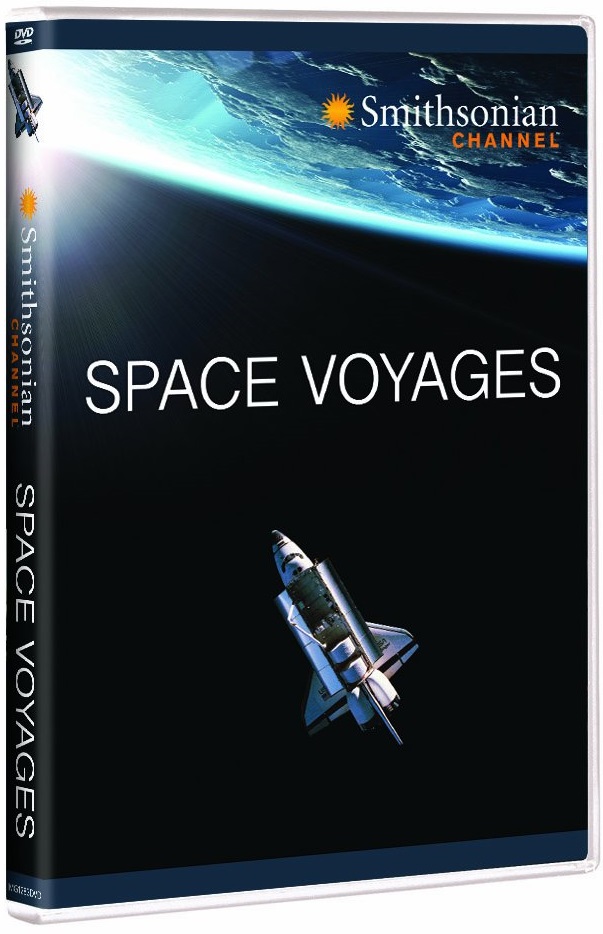
The Smithsonian Channel’s Space Voyages miniseries was one of the best programs I saw last year, and for anyone who missed it, the four-episode show is now available on DVD. The Smithsonian Channel can always be counted on for riveting documentaries, and the continuing story of our journeys into space are highly intriguing.
The first episode is titled “Into the Unknown,” and it begins with the launch of the Curiousity on November 26, 2011. The Curiousity is a robotic Mars Rover, and its journey to the red planet was nine months. The craft landed safely and on time, and has been gathering invaluable information ever since. After this account of how far the space program has progressed, we journey back in time to the late ‘50s, when it all began.
The tale begins with the launch of the Soviet Union’s Sputnik in 1957, the first shot in what came to be called “The Space Race.” During these heated days of the Cold War, the race was on to explore space. The political fight of Capitalism versus Communism took form in many ways, but this battlefield provided a huge boon to the science of space exploration. In 1961, John F. Kennedy said that the United States would land a man on the moon by the end of the decade. It was a tall order, and there was a lot that had to happen first, and these steps are examined over the course of “Into the Unknown.”
“The Moon and Beyond” is the title of the second hour of Space Voyages, and in it we go back to those amazing days of men walking on the moon. The episode actually opens up with footage from 1972, and our final trip there. We then double back to see the history of the Apollo program, leading up to Apollo 11. With the famous words “That’s one small step for man, one giant leap for mankind,” astronaut Neil Armstrong was the first man to walk on the moon. As old-hat as this may seem all these years later, it really was an astounding moment, and seeing it again is as thrilling as it was when I was just a little kid watching on our little black and white television.
As a long-term proposition, the Apollo space program was unsustainable, and “Open for Business” sheds light on some of the new approaches to space exploration. In one of the more insightful moments of the series, it is said that the Apollo method could be compared to scrapping each Boeing 747 plane after every transatlantic flight. This was the genesis behind the various space shuttles we have seen over the years, beginning in the ‘70s.
The emergence of such businesses as Richard Branson’s Virgin Galactic, a private for-profit enterprise to take tourists into space has been the most recent event in the world of space. In “Open for Business,” we see the history of these types of ventures, which even include a projected “space hotel.”
Lastly, “Surviving the Void” examines what it would take to actually land humans on Mars. As it was with the moon all those years ago, just getting there is only half of the equation. We also need to figure out how to get the astronauts back. A big first step in this regard was the Skylab project, which was launched in 1973. Skylab was the first time that people ever spent an extended period of time in space, and problems arose which could only be discovered through experience.
“Surviving the Void” also takes a look at the situation that unfolded in Apollo 13, which again points out difficulties in dealing with unforeseen situations that arise. We see the first new space suit in 20 years, as well as the design of what a manned Mars rover would look like. For space geeks, this material is priceless, but I don’t think you just have to be a nerd to enjoy it. Even though I was very young in 1969 when men first walked on the moon, I still remember the feeling of excitement in the air. Imagine what it would be like if we did make it to Mars.
The lone bonus feature is really like a fifth episode of the series. In the 45-minute “Shuttle Discovery’s Last Mission,” we follow the shuttle on its “final” trip, to the Smithsonian National Air and Space Museum. After a fascinating history of the Discovery, we see it loaded on to a customized 747, and taken to the Smithsonian. This may double as an advertisement for the museum, but that is alright by me, as it is a place I would love to visit one day.
For anyone interested in our real-life adventures in space, Space Voyages is mandatory viewing. Even though we do not hear about it the way we once did, it is good to know that work is continuing in – or rather, out there.